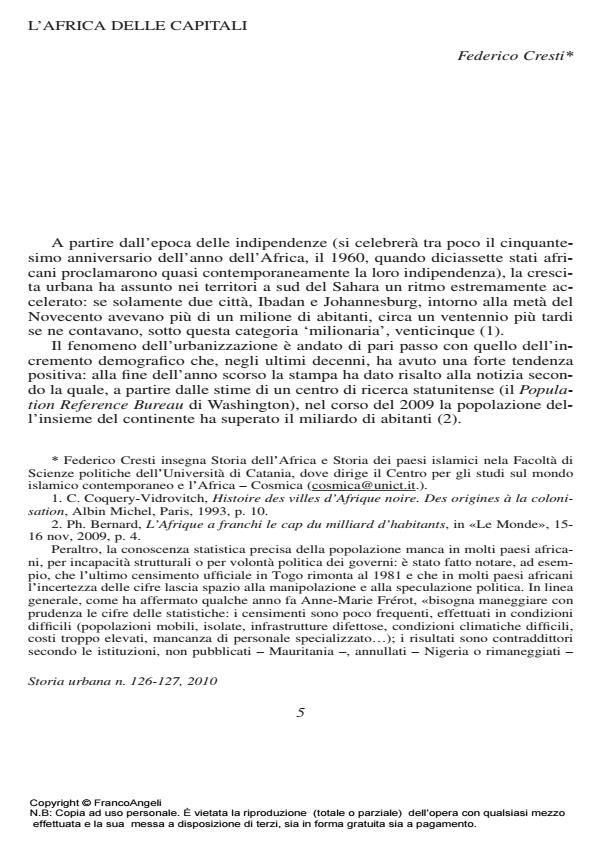Capital cities of Africa
Journal title STORIA URBANA
Author/s Federico Cresti
Publishing Year 2010 Issue 2010/126/127 Language Italian
Pages 11 P. 5-15 File size 661 KB
DOI 10.3280/SU2010-126001
DOI is like a bar code for intellectual property: to have more infomation
click here
Below, you can see the article first page
If you want to buy this article in PDF format, you can do it, following the instructions to buy download credits

FrancoAngeli is member of Publishers International Linking Association, Inc (PILA), a not-for-profit association which run the CrossRef service enabling links to and from online scholarly content.
During the last fifty years, starting from the ‘Year of Africa’ (1960: 17 African States proclaimed their Independence) the African population has entered a period of very rapid growth: Africa reached 1 bilion inhabitants in 2009. The large towns, in particular, where involved in this phenomenon during the last decades: if only two towns, Ibadan and Johannesburg, had more than one million inhabitants in the midst of the last cen- tury, twenty years later 25 towns can enter this category. More than one third of the total population (38%, nearly 350 millions inhabitants) lived in an urban milieu in 2005, and according with some scholars the African ‘citizens’ will be more than the half of the total population at the midst of our century, probably 65%. The analysis of some case-studies, concerning the capital cities, shows the specific problems of some the largest African towns and their ties with the evolution of the political situation of their countries.
Keywords: Subsaharan Africa, Demographie growth, Urban growth
Federico Cresti, L'Africa delle capitali in "STORIA URBANA " 126/127/2010, pp 5-15, DOI: 10.3280/SU2010-126001